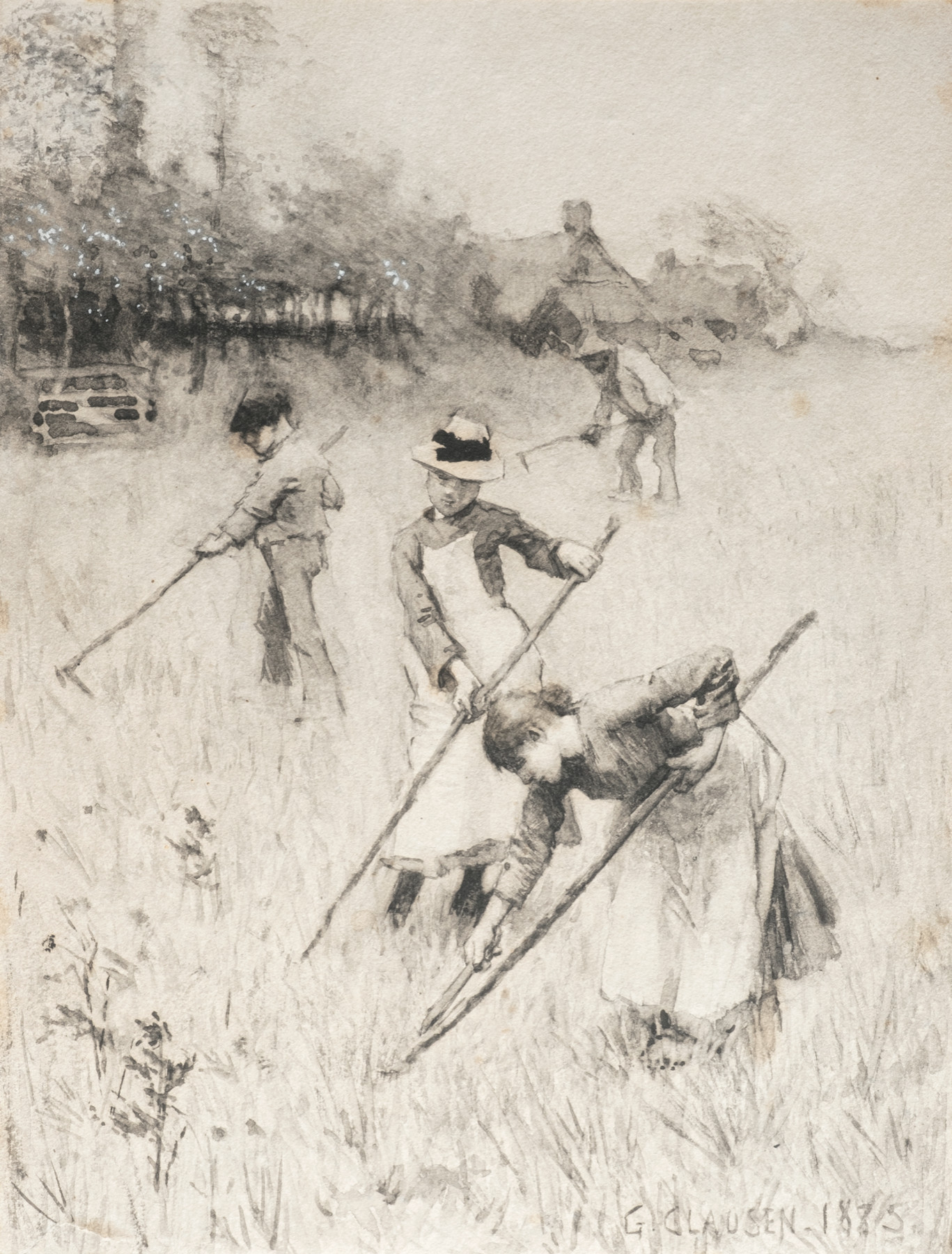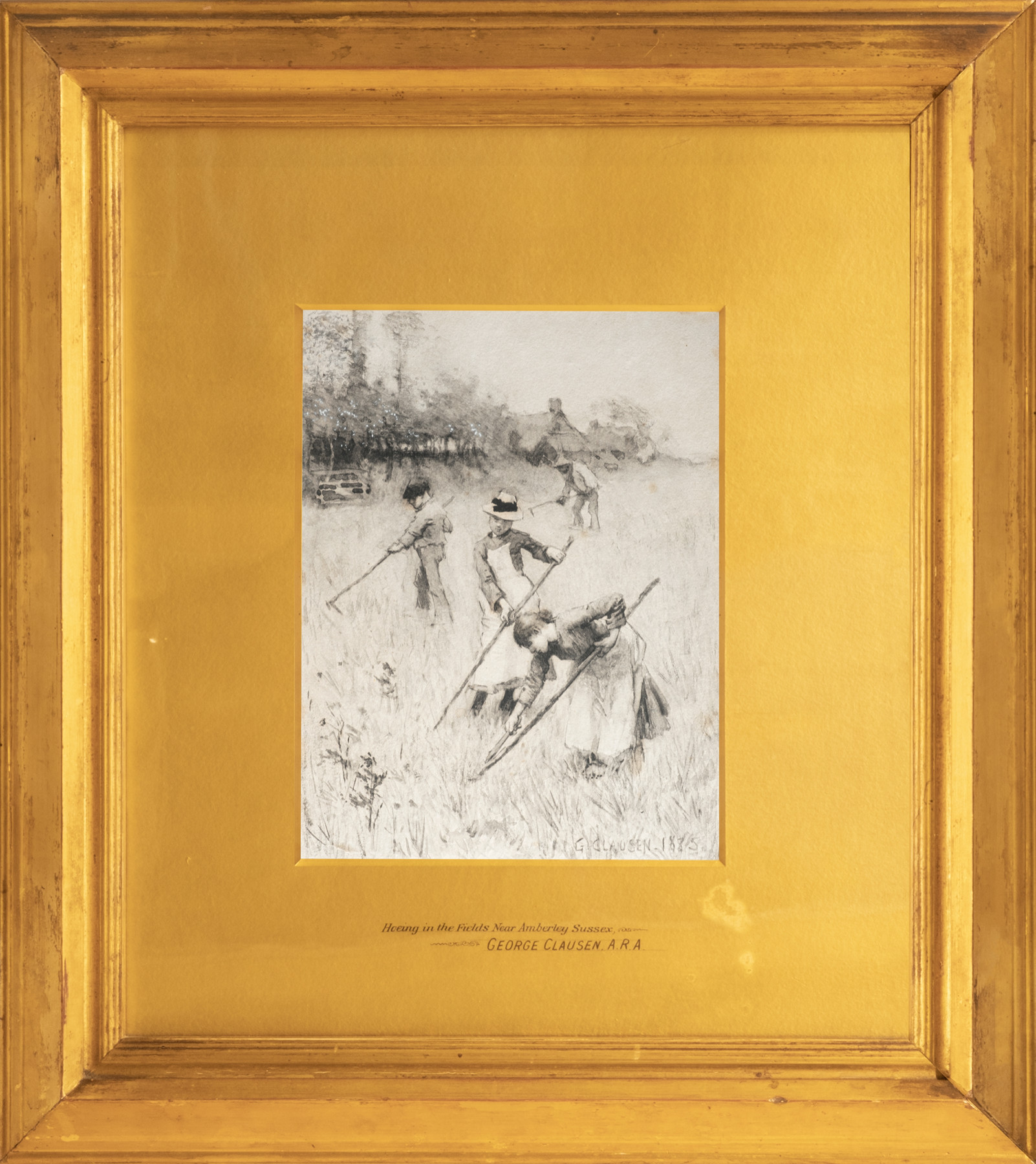

SPRING (HOEING YOUNG WHEAT)
Children, light of foot, were ideal for 'hoeing young wheat', under the supervision of an elderly labourer. By the mid-1880s, teachers in country schools had come to expect absences at critical times of the farming year, spring weeding being one of them. With the extension of the school leaving age to thirteen and the toughening of attendance requirement in the 1890s, spring hoeing and stone picking for younger children had ceased.
In the foreground, a girl awkwardly looks on while her older sister stoops to clean and sharpen the blade of her hoe. The stocky lad in the background is probably 'Joe' who posed as the shepherd in the second Spring... illustration, and as The Shepherd Boy, 1886 (private collection). The children conform to types described by contemporary social commentators such as Richard Jefferies.
For the author, boys were 'always very short for their age' and girls, 'thin and skinny, angular and bony. He concludes,
If it is wished to breed up a race of men literally 'hard as nails, no better process could be devised; but looked at from a mental and moral point of view, there may be a difference of opinion.